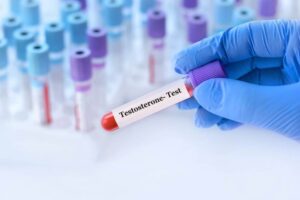 Fatigue, low mood, poor concentration and a faded sex drive are often written off as “just getting older.” But when those symptoms gather and persist, they can point to something treatable: low testosterone (male hypogonadism). New guidance from Pharma Dynamics’ scientific team underlines why men — and the people who care for them — should pay attention, screen early and seek medical advice rather than chalking symptoms up to stress or ageing alone.
Fatigue, low mood, poor concentration and a faded sex drive are often written off as “just getting older.” But when those symptoms gather and persist, they can point to something treatable: low testosterone (male hypogonadism). New guidance from Pharma Dynamics’ scientific team underlines why men — and the people who care for them — should pay attention, screen early and seek medical advice rather than chalking symptoms up to stress or ageing alone.
“Testosterone underpins much of what men take for granted — strength, drive, focus and mood. When it dips the effects ripple across body and mind,” says Ingrid Singels, Associate Director of Pharma Dynamics’ Scientific Division. The company has digitised the internationally recognised ADAM Screening Questionnaire to help men assess risk quickly and share results with their doctor.
More than libido: the many faces of low testosterone
Low testosterone is commonly associated with sexual symptoms — reduced libido, erectile dysfunction and fewer spontaneous erections — but its effects stretch well beyond the bedroom. The press release highlights the broader clinical picture:
-
Muscle and body composition: reduced muscle mass and strength, increased fat accumulation and slower recovery from exercise or injury.
-
Bone health: lower testosterone is linked with reduced bone density and higher fracture risk.
-
Mental health: depression, irritability, persistent fatigue, poor concentration and diminished motivation are frequently reported.
-
Potential long-term harms: observational evidence suggests associations with increased cardiovascular risk and higher mortality in men with chronically low testosterone.
These changes can gradually erode quality of life and functional capacity — which is why early screening matters.
Who’s at risk — causes and timing
Testosterone naturally declines with age — roughly 1% per year starting in a man’s 30s — but it rarely disappears completely. Pharma Dynamics distinguishes three broad scenarios that underpin low levels:
-
Primary hypogonadism: where the testes themselves cannot produce adequate testosterone.
-
Secondary hypogonadism: when the hypothalamus or pituitary fail to signal testosterone production — causes include chronic illness, medications, obesity, type 2 diabetes, HIV, poor sleep, excessive alcohol and major stress.
-
Late-onset (adult) hypogonadism: a gradual, age-related decline often amplified by overweight/obesity and chronic disease.
“In many men the onset is silent,” Singels notes. “Chronic fatigue or reduced strength is often assumed to be lifestyle or ageing, delaying important clinical conversations.”
Prevention, detection and practical steps
While not all cases are preventable, the press release stresses lifestyle measures that can reduce risk or slow decline: maintaining healthy body weight (reducing abdominal fat), regular strength training, good sleep hygiene, managing chronic diseases (e.g. diabetes, hypertension), limiting alcohol intake and reducing stress.
Pharma Dynamics’ digitised ADAM questionnaire offers an entry point for men to assess symptoms, download results and take them to a GP — a practical step that removes friction from the initial screening conversation.
When medical evaluation and treatment are needed
If screening and symptoms indicate possible hypogonadism, the next step is medical evaluation and blood testing. Treatment decisions depend on cause, coexisting conditions and patient goals. Pharma Dynamics outlines standard clinical approaches:
-
Tackle reversible contributors first (weight loss, improved glycaemic control, sleep disorder treatment).
-
Where low testosterone is confirmed and symptoms are significant, Testosterone Replacement Therapy (TRT) is a treatment option. TRT is available in multiple formulations — gels, patches, short- and long-acting injections, and implants — each with practical pros and cons (for example, long-acting injections reduce fluctuations and dosing frequency).
-
Importantly, testosterone is a regulated medicine in South Africa; clinicians must guide use, monitor effects and weigh risks and benefits for each patient.
Why men shouldn’t wait
“Low testosterone is not simply a sexual issue — it’s a systemic issue affecting strength, vitality, mood and long-term well-being,” Singels says. Early detection and a structured medical response can prevent downstream harms and improve quality of life.
The message is straightforward: persistent symptoms that affect daily life deserve investigation. Tools like the ADAM questionnaire make it easier for men to start the conversation with a healthcare provider — and, when indicated, appropriate investigation and treatment can follow under medical supervision.



































